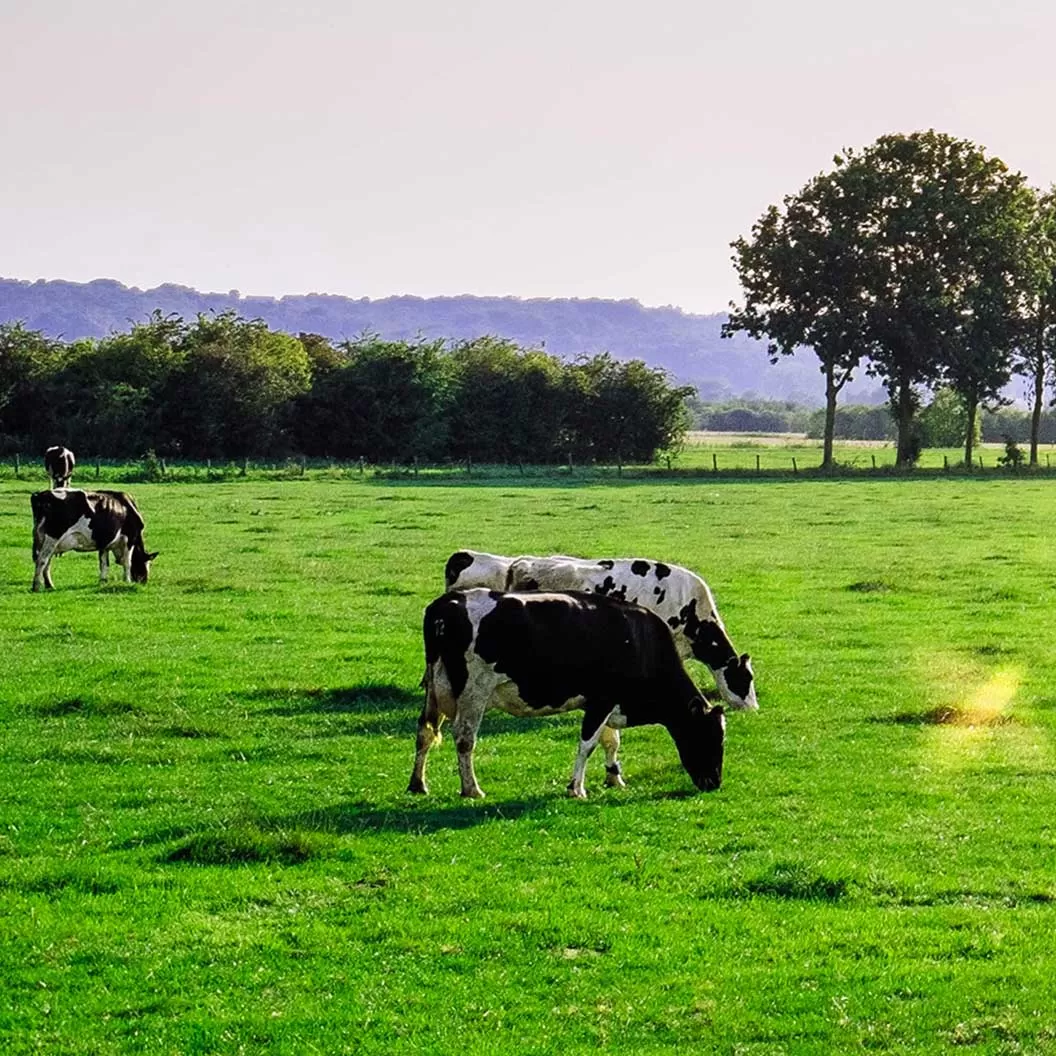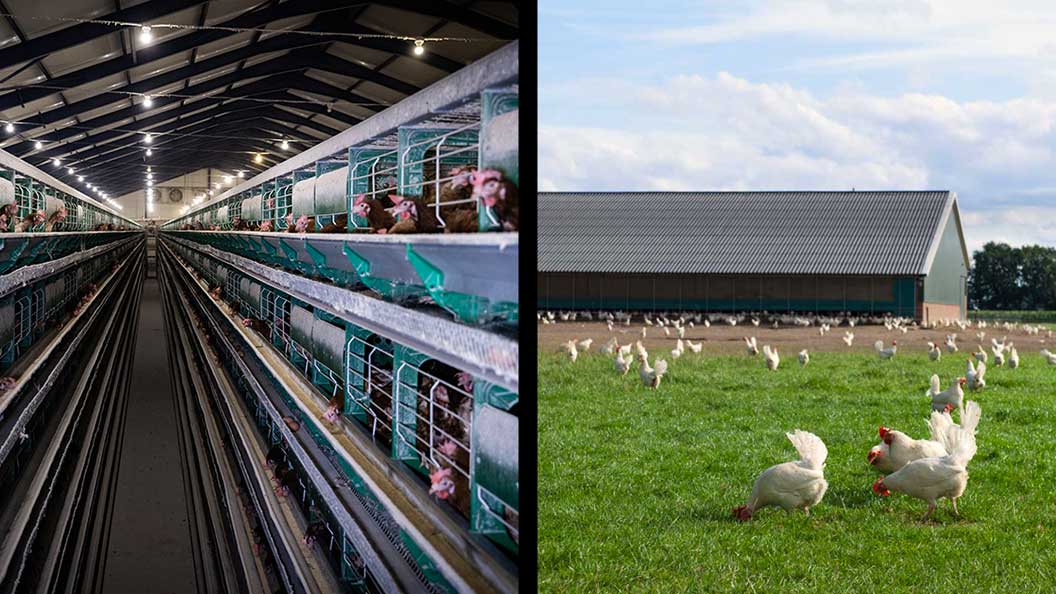The five domains model or how to assess animal welfare
An alternative model was introduced by the animal welfare community in 1994: the Five Domains model, which reflects the fundamental physiological needs of animals to undergo positive experiences.
Itziar García Haro
Content Creator
29/04/2022

According to the World Organisation for Animal Health (OIE), animal welfare is "the physical and mental state of an animal in relation to the conditions under which it lives and dies". But thanks to advances in animal welfare science, we know that this definition is not sufficient.
Animal welfare as a modern legal and political concept was developed in 1965 in the UK, following the publication of Animal Machines by Ruth Harrison, an animal welfare activist. The book presented an investigation into British factory farms, and raised public concern about animal suffering in factory farming(1).
“Animal welfare as a modern legal and political concept was developed in 1965 in the UK”

In response, the British government commissioned a report by veterinarian Dr Francis Brambell that would define acceptable levels of farm animal welfare: the Five Freedoms.
This model was taken up for discussion in the European Union, being put forward as a solution to address the systemic abuse of farm animals. Between 1968 and 1979 the Council of Europe adopted three conventions concerning the protection of farm animals:
1- The European Convention on the Protection of Animals during Transport.
2- The European Convention on the Protection of Animals kept for Farming Purposes.
3- The European Convention on the protection of animals at slaughter.
These conventions formed the basis for general rules for the protection of animals of all species kept for the production of food, wool, fur or leather, or for other farming purposes, including fish, reptiles or amphibians, to be laid down in Council Directive 98/58/EC in 1998. These standards are based on the European Convention for the Protection of Animals kept for Farming Purposes and reflect the so-called "Five Freedoms".
However, the Five Freedoms have had virtually no effect on animal welfare in Europe due to their non-specific wording, which makes an exact and unanimous legal interpretation impossible.
“The Five Freedoms have had virtually no effect on animal welfare in Europe due to their non-specific wording”
The veterinary sector and numerous organisations have spoken out against the Five Freedoms model and have advocated a shift to a framework that focuses on positive experiences for animals, rather than protecting them only from negative experiences. To remedy what they see as a major shortcoming in the formulation of appropriate animal welfare requirements, the animal welfare scientific community put forward an alternative model in 1994: the Five Domains model, which reflects the fundamental physiological needs of animals for positive experiences.
In 2021, the European Commission announced that instead of the Five Freedoms, it would switch to the Five Domains model as a guide. Each domain is explained in detail below:
Nutrition
This domain is based on access to and quality of food and water. Each species requires essential nutrients, as well as adequate energy and protein content, and these nutritional needs should be met. This model specifies that the animal should be fed the appropriate amounts according to its needs, covering not only malnutrition due to underfeeding, but also overfeeding.
It is also necessary to take into account the effect on the animal of the lack of variety of food. Some species tend to eat varied diets, so that even if the food they receive for long periods of time covers their basic nutritional needs, it would not be sufficient to promote animal welfare.
“The animal welfare scientific community put forward an alternative model in 1994: the Five Domains model”
Environment
This refers to the quality of the space available to the animals and the opportunities available to them. Animals are exposed to different circumstances depending on their environment, and this domain assesses the possibility (or lack of it) for the animal to change these circumstances.
One example is numerous hens crammed in a cage. Regardless of the conditions in which they are kept, these hens do not have the option to go to a place with less humidity or less wind should they need to. In this case, just having a clean substrate is not a positive experience in itself. But being able to move of their own free will to where they could be comforted by the warmth of the sun would be.

Health
This domain concentrates on the impacts on animal welfare of injury, disease and different levels of fitness.
To achieve or maintain good health and fitness accompanied by a wide range of positive affective experiences, the characteristics of the previous two domains (appropriate nutrition and environment) should be taken into account, with the addition of appropriate veterinary care.
Behaviour
While the previous domains focus mainly on welfare inputs related to animal care, Domain 4 takes into account the opportunities and choices animals have in interacting with their environment, other animals and humans.
For example, a hen crowded in the cage mentioned above would tend to experience negative effects, such as boredom or anxiety, because she would not have the choice to engage in different activities or behaviours. Providing her with the opportunity to interact freely with both her environment and other animals could help her feel confident, curious and energetic.
Mental health
This is the result of the sum of the previous four aspects. That is, a balance of the positive and negative aspects that influence the welfare of the animal (2).
Now that we have a detailed understanding of each aspect of the Five Domains model, we can understand why its application, at the legal level, would improve the worst animal welfare standards.
The main legal problem with the Five Freedoms model is that the freedoms are drafted in a non-specific way, which has prevented them from producing effects on animal welfare. For example, the Five Freedoms model appears to prohibit causing stress and fear to animals, but fails to define what acts would constitute causing such harm.
Ultimately, the Five Domains model provides an explicit means of effectively and systematically assessing the welfare implications of a wide range of human-animal interactions. This is why, at AWO, we work with the Five Domains approach, in order to promote animal welfare that favors positive experiences.
REFERENCES
1 Alice Di Concetto, For a More Humane Union: A Legal Assessment of EU Farm Animal Welfare Legislation, The European Institute for Animal Law & Policy (2022)
2 Mellor, D.J., Beausoleil, N.J., Littlewood, K.E., McLean, A.N., McGreevy, P.D., Jones, B. & Wilkins, C. (2020). The 2020 Five Domains Model: Including Human-Animal Interactions in Assessments of Animal Welfare. Animals, 10(10), 1870. DOI: 10.3390/ani10101870



